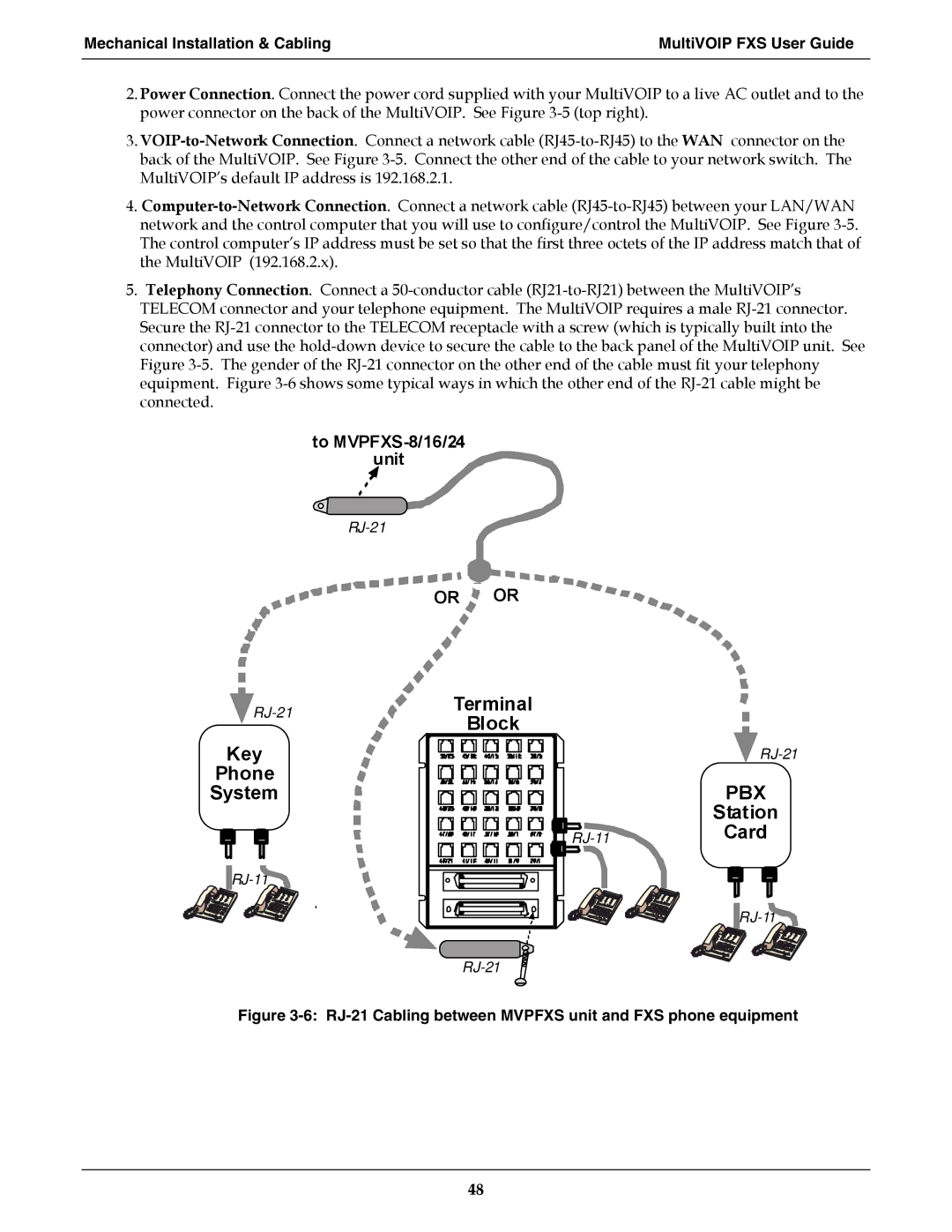Mechanical Installation & Cabling | MultiVOIP FXS User Guide |
| |
2.Power Connection. Connect the power cord supplied with your MultiVOIP to a live AC outlet and to the power connector on the back of the MultiVOIP. See Figure 3-5 (top right).
3.VOIP-to-Network Connection. Connect a network cable (RJ45-to-RJ45) to the WAN connector on the back of the MultiVOIP. See Figure 3-5. Connect the other end of the cable to your network switch. The MultiVOIP’s default IP address is 192.168.2.1.
4.Computer-to-Network Connection. Connect a network cable (RJ45-to-RJ45) between your LAN/WAN network and the control computer that you will use to configure/control the MultiVOIP. See Figure 3-5. The control computer’s IP address must be set so that the first three octets of the IP address match that of the MultiVOIP (192.168.2.x).
5.Telephony Connection. Connect a 50-conductor cable (RJ21-to-RJ21) between the MultiVOIP’s TELECOM connector and your telephone equipment. The MultiVOIP requires a male RJ-21 connector. Secure the RJ-21 connector to the TELECOM receptacle with a screw (which is typically built into the connector) and use the hold-down device to secure the cable to the back panel of the MultiVOIP unit. See Figure 3-5. The gender of the RJ-21 connector on the other end of the cable must fit your telephony equipment. Figure 3-6 shows some typical ways in which the other end of the RJ-21 cable might be connected.
to MVPFXS-8/16/24
unit
RJ-21
OR  OR
OR
RJ-21 | Terminal | |
| Block | |
Key | | RJ-21 |
Phone | | PBX |
System | |
| | Station |
| RJ- | Card |
RJ- | | |
| | RJ-11 |
| RJ-21 | |
Figure 3-6: RJ-21 Cabling between MVPFXS unit and FXS phone equipment

![]() OR
OR